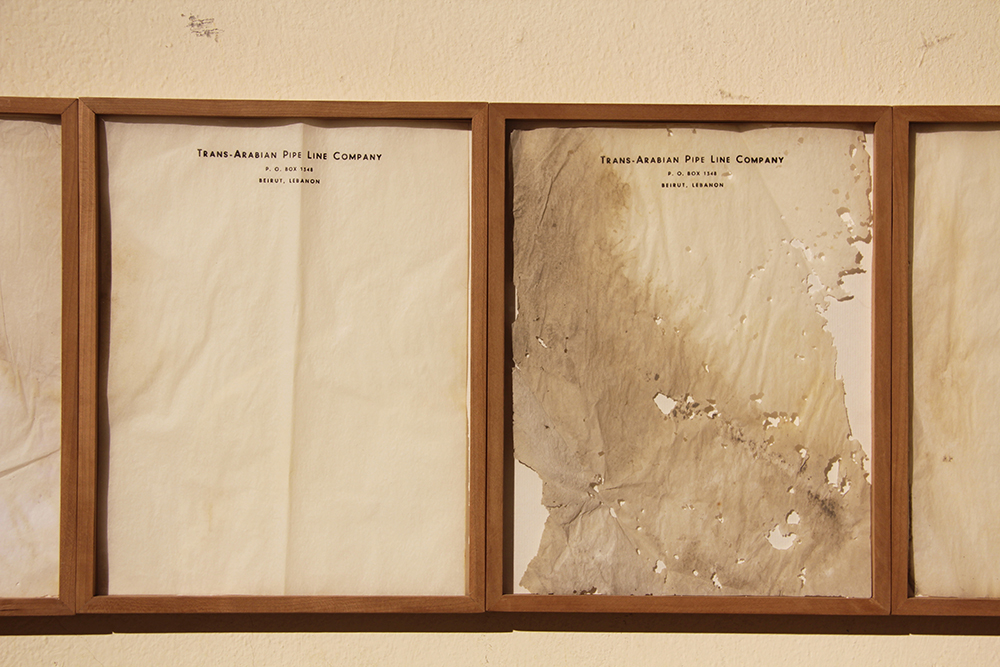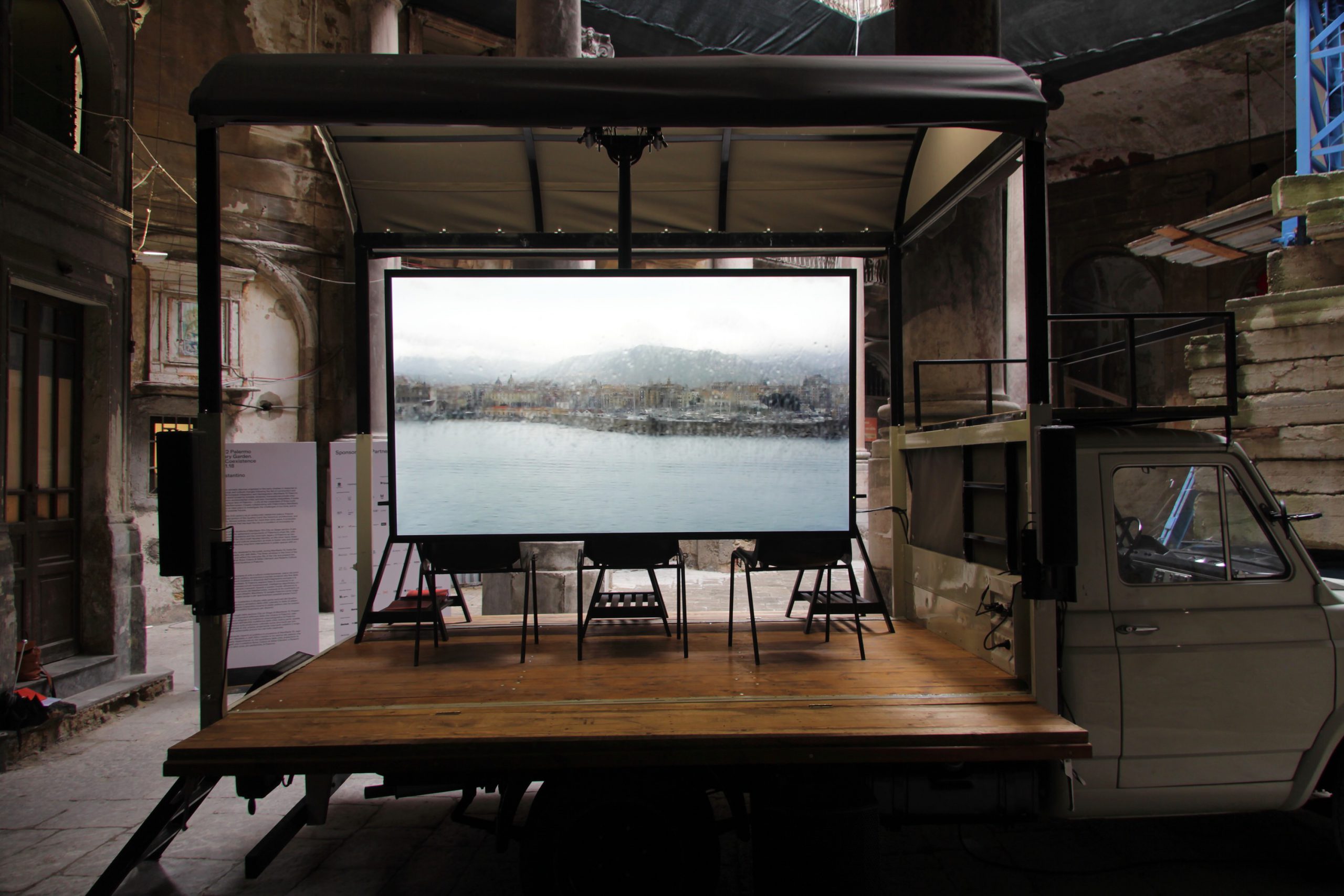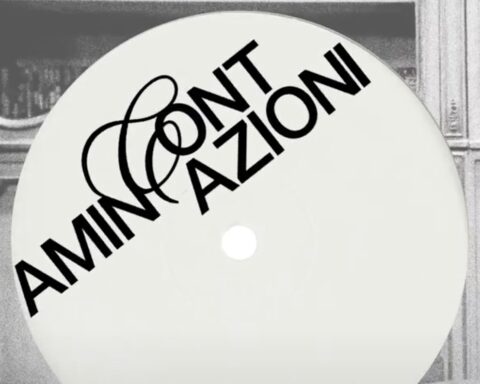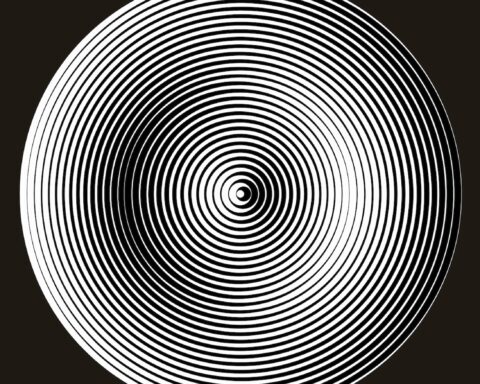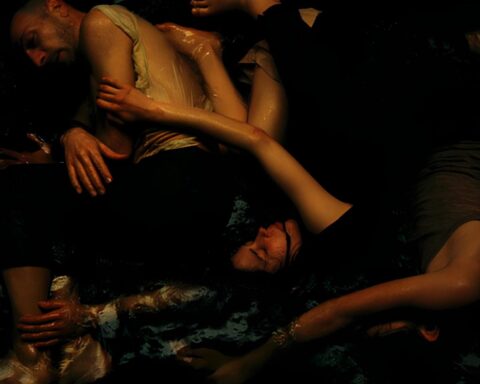A small crowd, international and local, was concentrated in the streets and in the squares of Palermo during the opening days of Manifesta 12. The city, thanks to its secular role of Mediterranean hub and thanks to the porous nature of its historic center, is configured as an ideal place to host a show widespread in the territory and founded on deep postcolonial principles. Nevertheless the atmosphere of great enthusiasm that accompanies the event is not enough to hide the uncertainties raised by the curatorial system that is sometimes fragile and in a relationship of involuntary competition with the city. The empathic and bodily experience of crossing Palermo, combined with the melancholic beauty of its ruined buildings, dominates up the intensity of the experience offered to visitors by the use of the works. The biennial, whose title Il Giardino Planetario is based on the writings of the French botanist Gilles Clément, looks at the garden as an ideal place where cultural syncretism and the coexistence of infinite otherness proves to be not only possible but always practicable and rooted in local traditions. The View of Palermo painted by Francesco Lojacono in 1875, is the chosen symbol of Manifesta 12: none of the plants are actually from Sicily. To define the deep essence of the garden, a place where nature and culture meet, are not so much the roots of the plants it hosts as the routes traveled by the seeds that generate them. Manifesta then proves to be deeply postcolonial in structure as well as in the selection of over fifty invited artists. The grace and the anti-rhetorical intelligence with which the stratified history of Palermo and the complex question of the Mediterranean are told are elements of great force of the exhibition.
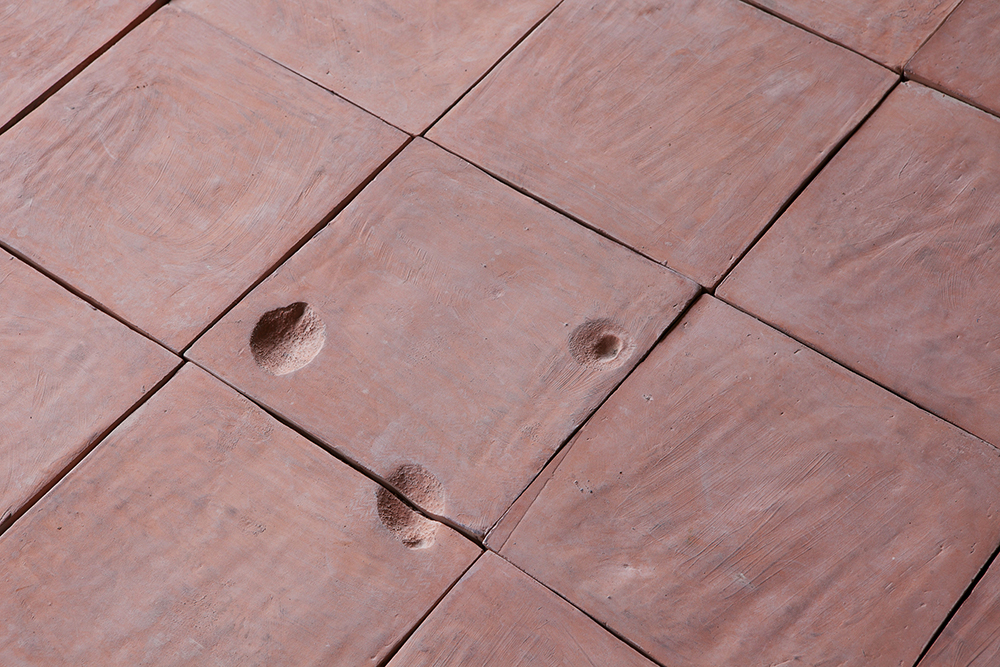
If over time we have learned that sometimes it is risky and not very productive to ask the art world for a direct intervention in reality and in political contingency, the superimposition of these two events raises questions about the role of art, questions that are anything but easy to be solved and of which an institution like Manifesta should necessarily take charge. The biennial partially fulfills this task by setting up a workshop inside the Garibaldi Theater that will host sessions of meetings and performative events throughout the occassion.
The heart of Manifesta is organized according to three research groups: Garden of Flows, Out of Control Room and City on Stage. Each of them is then developed through interventions disseminated in over twenty exhibition locations.
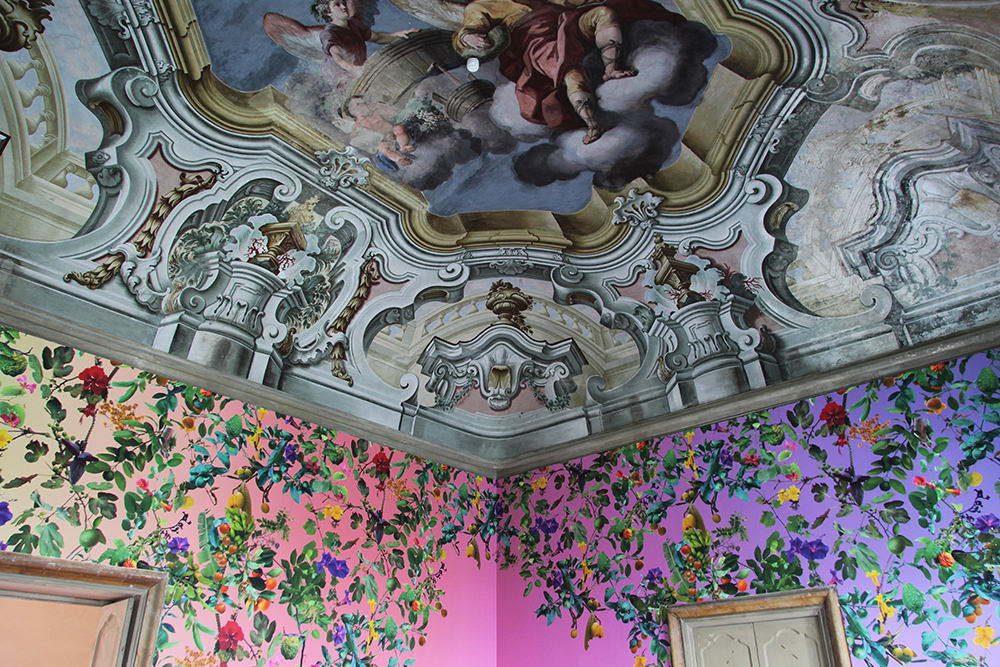
Garden of Flow is the section that contains the most fragile element and at the same time the largest one. In the botanical garden the works almost disappear in the dialogue with the marvelous plant species it hosts. Of great interest is the intervention of Michael Wang who, building a staircase able to overcome the high wall of the vegetable garden, offers the public an almost photographic look on a portion of the landscape in which vegetation and abandoned industrial architecture coexist. With Foreign Farmer Leone Contini returns a research, almost a decade long, that led him to collect and study the seeds used by the different communities of foreign peasants active in Italy. These seeds, like those who transport them, have always been migrants and their living presence helps to silently subvert the concepts of origin: origin and national belonging.
The section hosted by Palazzo Butera however, is one of the beautiful surprises offered by Manifesta. Renato Leotta, with rare and graceful lyricism, transposes an ideal garden inside one of the large halls of the building, covering the floor with clay tiles that bear the signs of the fall of numerous lemons. The California duo Fallen Fruit with Theater of the Sun covers the walls with a pop-art-flavored paper and produces a free distribution map, which indicates the position of hundreds of fruit trees scattered around the city of Palermo, specifying their origin, naturally not Sicilian. Then there is Maria Thereza Alves who could be assumed as an ideal guardian of the entire Manifesta. A proposal for syncretism (this time without genocide) is a tribute, in the form of a design on ceramic tiles, to the plant and animal landscape of Sicily in which the “exotic” elements have always been assimilated into local traditions. Moreover, the building, overlooking the port and subjected to a restructuring that shows its precarious and stratified structure, reflects on the idea of negotiating different identities.
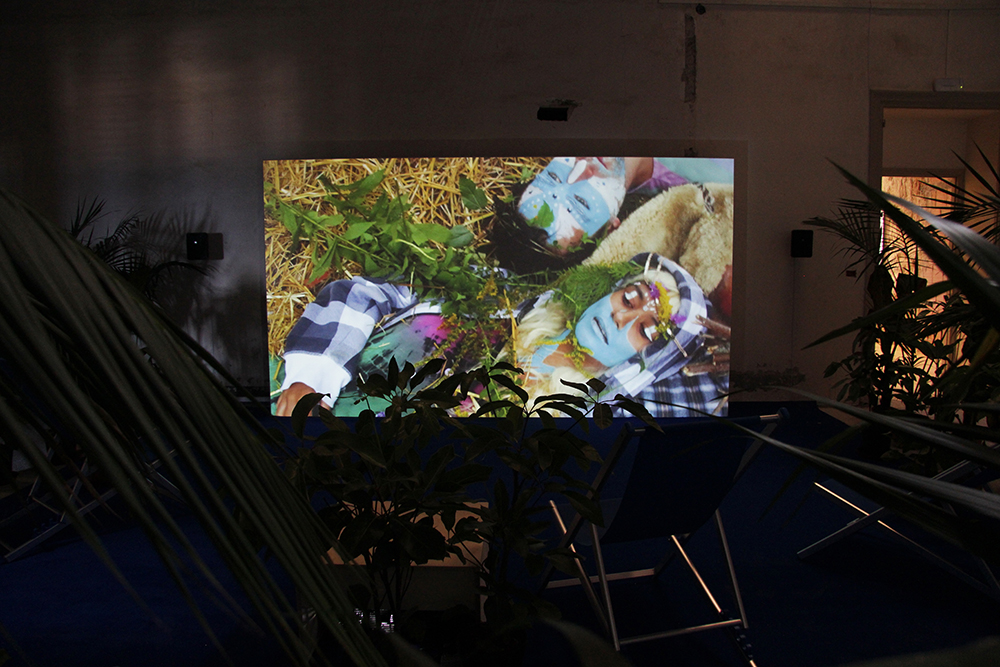
Melanie Bonajo, Night Soil, 2014-2018. Video Trilogy
Garden of Flows – Palazzo Butera, Palermo. Photo: Wolfgang Träger. Photo Courtesy: Manifesta 12 Palermo and the artist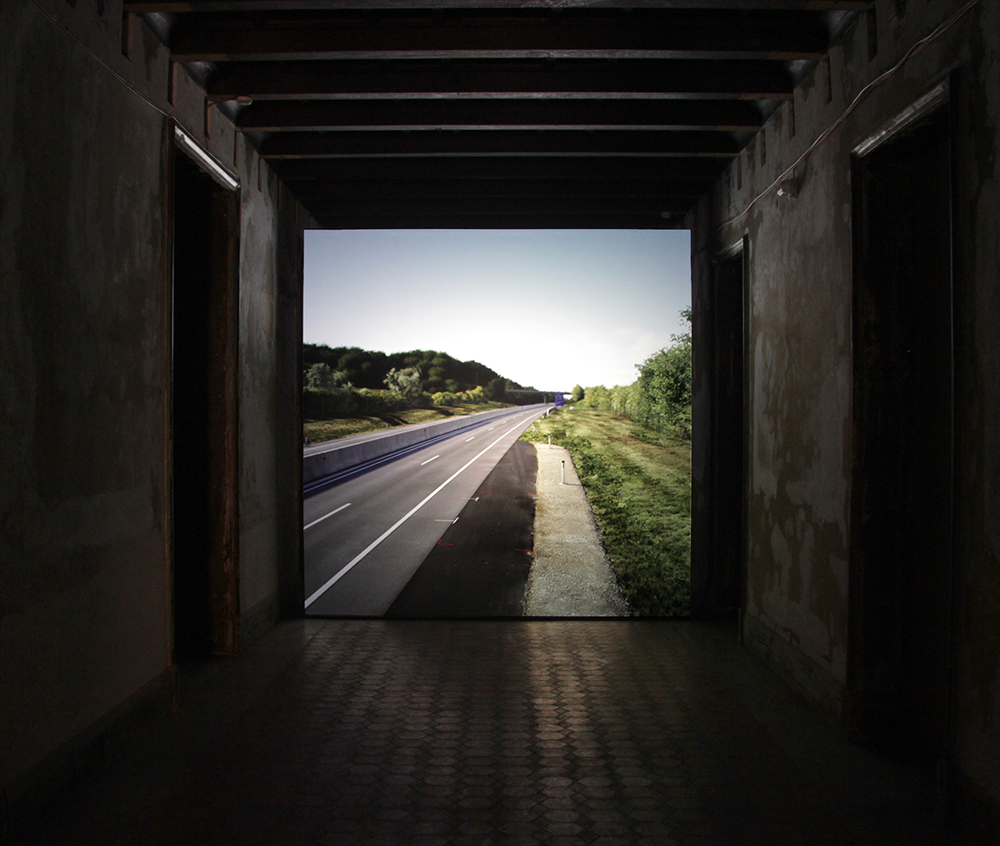
John Gerrard, Farm (Council Bluffs, Iowa), 2015. Video simulation. Out of Control Room – Palazzo Ajutamicristo, Palermo. Photo Courtesy: Thomas Dane Gallery, London
and Simon Preston Gallery, NewYork. Collection: Bernhard Chwatal, Vienna
Out of Control Room is the section of Manifesta that offers many profoundly declarative experiences of exhibition and which leave little space to the body as much as to the hermeneutic capabilities of the spectator. Inside Palazzo Ajutamicristo it reflects on the concept of border and that of network, as a network of dematerialized power, transnational and invisible. Rayyane Tabet recalls a portion of the Trans-Arabian Pipeline through cylindrical modules with a minimalist taste, a pipeline linking Saudi Arabia, Syria, Jordan and Lebanon, countries now heavily militarized. The artwork has a great narrative and formal force. Berlin’s activists The Peng! Collective installed a telephone booth in the courtyard of the building with which you can anonymously contact the officials of various agencies of the secret services. The device, turns out to be a bluff when after a few moments the telephone communication stops abruptly.
Palazzo Forcella de Seta instead hosts a fragment of the exhibition that tells of the Mediterranean as a militarized border, combining stories and dramas of migration. Kader Attia proposes a long documentary film that reflects on the post-colonial body and its repression within the contemporary European scene. The collective Forensic Oceanography proposes a series of videos with radical analytical coldness. The artists demonstrate how much the applicant sinking into the Mediterranean of migrant boats is an action induced by Europe as a deterrent to migratory flows. It is an intervention reflecting on both the legitimating power of the biennial and the complex status of the work.
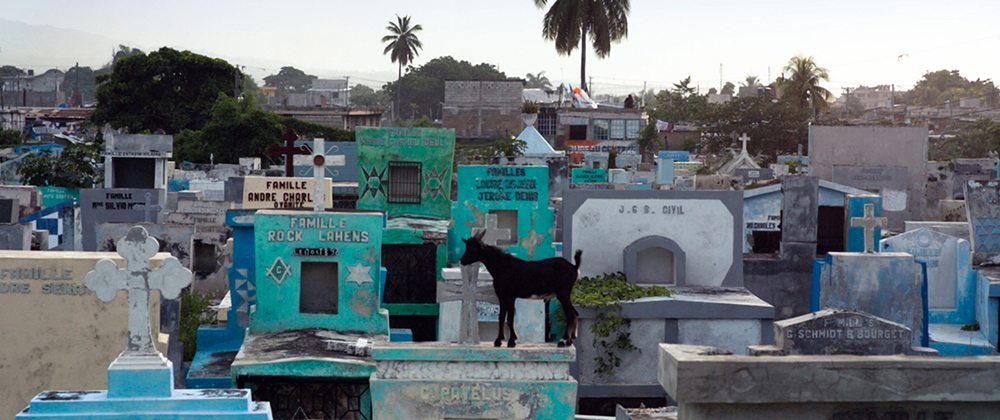
Yuri Ancarani, Whipping Zombie, 2017
Video – Duration 30min dcp, Dolby 5.1, aspect ratio: 2.35, color
Installation view by: Wolfgang Träger Still from video
Photo Courtesy: the artist, Isabella Bortolozzi Galerie, Berlin; ZERO…Gallery, Milan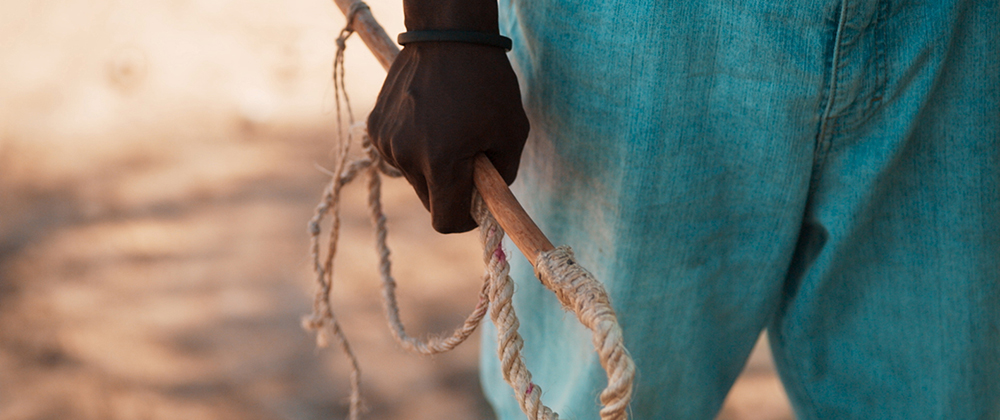
Yuri Ancarani, Whipping Zombie, 2017
Video – Duration 30min dcp, Dolby 5.1, aspect ratio: 2.35, color
Installation view by: Wolfgang Träger Still from video
Photo Courtesy: the artist, Isabella Bortolozzi Galerie, Berlin; ZERO…Gallery, Milan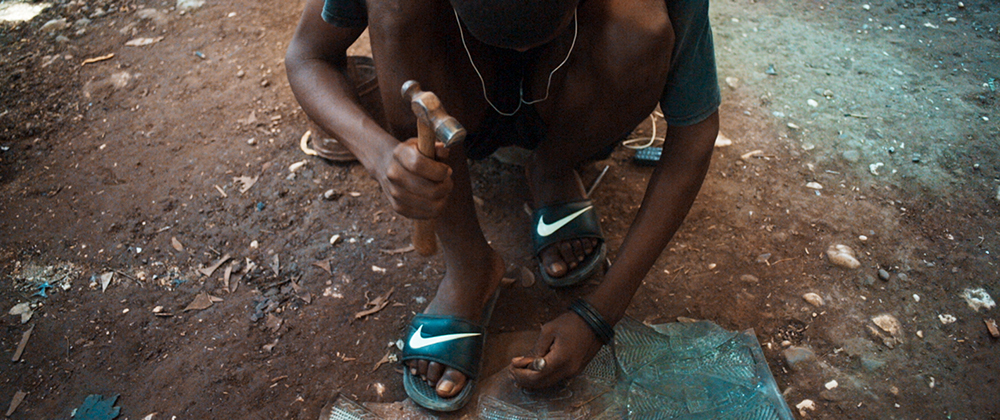
Yuri Ancarani, Whipping Zombie, 2017
Video – Duration 30min dcp, Dolby 5.1, aspect ratio: 2.35, color
Installation view by: Wolfgang Träger Still from video
Photo Courtesy: the artist, Isabella Bortolozzi Galerie, Berlin; ZERO…Gallery, Milan
At the end our attention goes to City on Stage, the third and last section of the biennial, that reactivates some of the public places with unexpressed potentials. The works collected in this section are all in keeping with the traditions and with the recent history of Palermo. MASBEDO with Protocol no. 90/6 produced one of the most iconic works of the entire Manifesta. Inside the State Archive, between thousands of non-inventoried volumes, the artists set up a colossal and mysterious video depicting a wooden puppet. Walking through the hall we find an old document that bears witness to the strict control exercised by the authorities established on the life and research of the director Vittorio De Seta, due to his proximity to the communist movement. The pupo then turns out to be an allegory of the artist who seeks and practices freedom regardless of the constraints imposed by the systems of power.
Yuri Ancarani produces a double video work of considerable impact, in which two very different forms of processing of the collective trauma are compared: those related to the Haitian anti-colonial movement and those related to the massacres of the mafia.
Even the main performative events, characterized by a high degree of spectacularity, re-elaborate almost to colonize some of the rituals of the Palermitan tradition. Matilde Cassani proposes a pyrotechnic celebration of the baroque culture of the city with four banners along one of the most important street of Palermo. The action proposed by the young Nora Turato, instead, presents a long monologue in which the tribute to the donas de fuera – women at the time persecuted by the Inquisition – reworking of critical elements of feminist theory tells us an intimate story.
